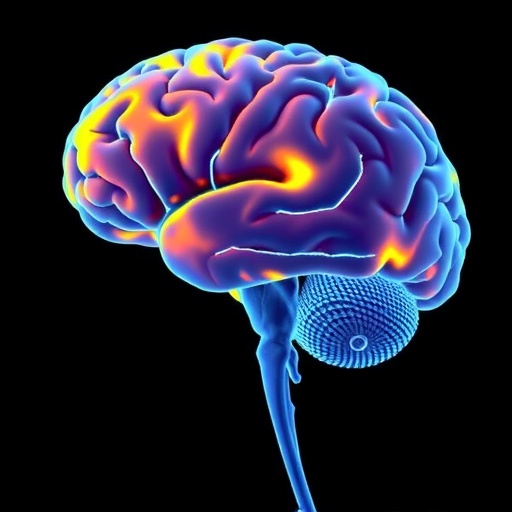In a groundbreaking study that challenges longstanding assumptions about neural stability, researchers have meticulously investigated how hippocampal place cells—neurons that encode spatial information—change their activity patterns over time, even when mice navigate seemingly identical environments. For years, neuroscientists have known that the hippocampus, a brain structure critical for memory and spatial navigation, contains place cells whose firing represents specific locations in space. However, recent experiments tracking these neurons over days revealed surprising shifts in their activity, a phenomenon labeled “representational drift.” Until now, it was unclear whether this drift reflects meaningful neural coding or merely artifacts of varying sensory inputs or behavior.
Using a state-of-the-art multisensory virtual reality (VR) platform, Climer, Davoudi, Oh, and colleagues have taken a decisive step to untangle this complex question. By immersing mice in a rigorously controlled and replicable multisensory environment, where visual, auditory, and tactile stimuli were precisely maintained, the researchers eliminated many potential confounding variables. This methodological leap allowed the team to evaluate whether representational drift arises inherently within hippocampal circuits or depends on changing external conditions or behavior.
Their results, published in Nature in 2025, reveal that hippocampal place cells do indeed undergo representational drift even in these highly stable virtual worlds. Importantly, subtle variations in the animals’ behavior or sensory cues could not explain the observed changes, suggesting that the drift is an intrinsic feature of hippocampal coding rather than an experimental artifact. This exciting discovery forces a reevaluation of how neural representations evolve over time and what functional roles such dynamics might play.
.adsslot_9tpa5IDs2j{width:728px !important;height:90px !important;}
@media(max-width:1199px){ .adsslot_9tpa5IDs2j{width:468px !important;height:60px !important;}
}
@media(max-width:767px){ .adsslot_9tpa5IDs2j{width:320px !important;height:50px !important;}
}
ADVERTISEMENT
Dissecting the nature of representational drift required the team to track individual place cells longitudinally, correlating their excitability with stability. Remarkably, cells that exhibited higher intrinsic excitability—essentially, a greater propensity to fire action potentials—were found to experience less drift. This inverse relationship implies that cell-specific physiological properties constrain the degree to which spatial representations fluctuate. Such findings open new avenues for understanding how internal neuronal states influence long-term memory stability and cognitive mapping.
The study also contributes critical insight to the ongoing debate over whether representational drift supports an adaptive function like temporal context encoding. Prior hypotheses posited that drift serves to uniquely timestamp or segregate similar experiences encountered at different moments, thereby enriching episodic memory schemas. However, by demonstrating drift in a fixed, reproducible environment absent meaningful sensory or behavioral changes, the current findings hint that drift might instead emerge from intrinsic cellular or network processes.
To ensure the robustness of their conclusions, the researchers employed advanced statistical analyses and computational modeling. These approaches controlled for confounds related to behavioral variability and sensory inputs, reinforcing that changes in place cell firing patterns could not be explained by external factors. Moreover, the multisensory VR system allowed for unprecedented experimental rigor, affording reproducible conditions that live physical environments cannot match, thus eliminating common sources of noise.
Beyond clarifying the nature of representational drift, this work spotlights neuronal excitability as a critical regulator of hippocampal stability. Neuronal excitability is influenced by a host of molecular and cellular mechanisms—including ion channel expression, synaptic inputs, and neuromodulatory signals—that collectively determine firing thresholds. Understanding how these parameters modulate representational drift could ultimately shed light on memory persistence and degradation in both health and disease.
From a broader perspective, these findings challenge conceptual models of memory encoding that assume static neural representations. Instead, neural coding in hippocampus may be inherently dynamic, fluctuating yet constrained, balancing the competing demands of stability and flexibility in memory networks. This dynamic coding strategy could provide biological substrates for continual learning while preventing catastrophic interference between memories.
Interestingly, the study’s use of a multisensory virtual reality paradigm underscores the transformative potential of VR technologies in neuroscience. By enabling precise control over environmental variables and simultaneous measurement of neural activity, VR-based experiments offer a powerful new toolkit for dissecting complex brain functions such as cognition, perception, and memory with unparalleled accuracy.
Overall, the work by Climer and colleagues redefines how we view hippocampal spatial representations and introduces new mechanistic hypotheses linking cellular excitability to functional network dynamics. This research not only elucidates fundamental principles of brain organization but also informs therapeutic strategies targeting memory dysfunction, where abnormal neural drift or excitability alterations may contribute to pathological states.
As neuroscience prepares to embrace more integrative and longitudinal approaches, the implications of representational drift extend beyond spatial coding centers in hippocampus. Similar principles may govern cortical circuits underlying sensory perception, decision-making, and abstract cognition. Future research expanding on these findings could reveal universal rules for how brains manage information stability amidst constant internal and external change.
In sum, the discovery that hippocampal place cells spontaneously drift in their spatial coding across days in highly reproducible multisensory environments—modulated by intrinsic neuronal excitability—provides a crucial missing piece in the puzzle of how memories evolve and endure. These insights deepen our understanding of the dynamic yet stable nature of cognitive maps and position hippocampal representational drift as a fundamental property of neural memory systems.
Subject of Research: Hippocampal place cell dynamics and representational drift in stable multisensory virtual environments.
Article Title: Hippocampal representations drift in stable multisensory environments.
Article References:
Climer, J.R., Davoudi, H., Oh, J.Y. et al. Hippocampal representations drift in stable multisensory environments. Nature (2025). https://doi.org/10.1038/s41586-025-09245-y
Image Credits: AI Generated
Tags: breakthroughs in neuroscience researchchallenges in understanding neural stabilitychanges in hippocampal activity patternseffects of sensory inputs on neuronsexperimental methods in neurobiologyhippocampal place cellsimplications of shifting neural mapsmultisensory virtual reality researchneural coding in the hippocampusrepresentational drift in neuronsspatial navigation and memorystability of neural representations




